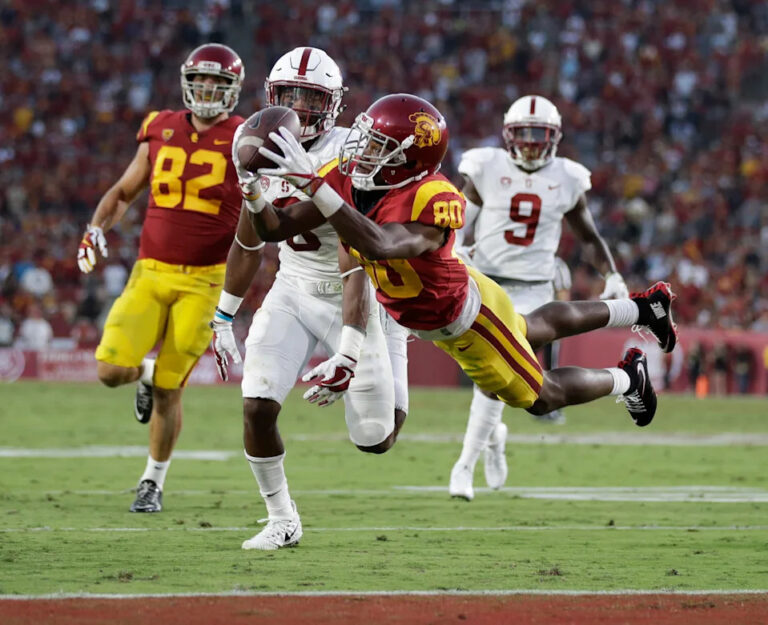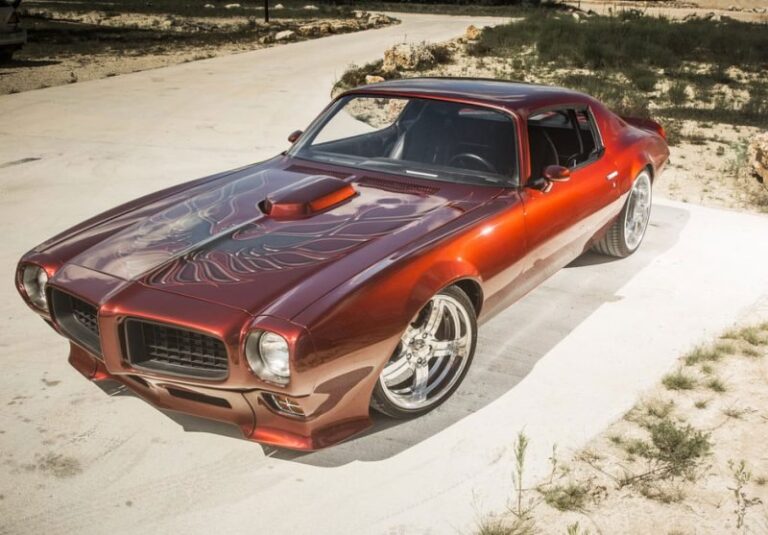Best Time To Buy A Brand New Car: A Comprehensive Guide to Optimizing Your Purchase
Best Time To Buy A Brand New Car: A Comprehensive Guide to Optimizing Your Purchase cars.truckstrend.com
Purchasing a brand new car is a significant financial decision, often ranking as one of the largest expenditures after a home. While the excitement of driving a gleaming new vehicle off the lot is undeniable, the shrewd buyer understands that when you buy can be just as crucial as what you buy. The "best time to buy a brand new car" isn’t a fixed date on the calendar but rather a strategic window influenced by dealership cycles, manufacturer incentives, economic trends, and even the weather. Understanding these dynamics can translate into substantial savings, better financing terms, or more desirable features, potentially saving you hundreds or even thousands of dollars.
This comprehensive guide will demystify the art of timing your new car purchase, providing you with actionable insights and practical advice to ensure you drive away with the best possible deal.
Best Time To Buy A Brand New Car: A Comprehensive Guide to Optimizing Your Purchase
Understanding the Dealership Cycle: When Do They Want to Sell?
Dealerships operate under various pressures and incentives, which create predictable sales cycles. Recognizing these cycles is key to identifying prime buying opportunities.
Monthly, Quarterly, and Annual Quotas
Every dealership and salesperson has sales targets to hit. These quotas are typically set monthly, quarterly, and annually. Missing these targets can impact bonuses, promotions, and even dealership allocations from manufacturers.
- End of the Month: As the last few days of the month approach, sales teams become more aggressive in closing deals to meet their monthly quotas. This is often an excellent time to negotiate, as salespeople might be willing to cut into their commission or offer additional perks to secure a sale.
- End of the Quarter: Similar to monthly quotas, the end of March, June, September, and December are critical periods. Dealerships often receive bonuses from manufacturers for hitting quarterly targets, making them even more motivated to move inventory.
- End of the Year: December is arguably the pinnacle of sales pressure. Dealerships are trying to clear out current model year inventory to make way for the next year’s models and are pushing hard to meet annual sales goals. This period often sees the most aggressive discounts and incentives.

Model Year Changeovers
Automakers typically release new model years in the late summer or early fall. When the new models arrive on dealer lots, the previous year’s models become "outgoing inventory" that needs to be sold.
- Late Summer/Early Fall (August – September): This is a sweet spot for buying the current model year. As dealerships receive shipments of next year’s vehicles, they become eager to clear out the remaining current-year stock. This often leads to significant discounts on models that are technically "new" but belong to the outgoing year. While you might miss out on minor updates in the new model year, the savings can be substantial.
Holiday Sales Events
Holidays are prime opportunities for manufacturers and dealerships to launch special sales events. These events are designed to attract customers with limited-time offers, lower interest rates, or cash back incentives.
- Major Holidays: Look out for sales around Memorial Day, Labor Day, Black Friday, Christmas, and New Year’s Eve. These periods often feature aggressive marketing and some of the best deals of the year. Black Friday, in particular, has become a significant car-buying holiday.
The Best Time of Year: Strategic Seasons for Savings
While the dealership cycle offers general guidance, certain times of the year consistently present better buying opportunities.
Late Fall/Early Winter (October – December)
This three-month window is frequently cited as the absolute best time to buy a new car, for several compelling reasons:
- Year-End Quotas: As discussed, December is the culmination of annual sales targets. Salespeople and dealerships are highly motivated to hit these numbers, leading to increased flexibility in pricing.
- Model Year Clearance: New models (for the next calendar year) are typically well-established on lots by October. This means current-year models are heavily discounted to make space.
- Holiday Sales: Black Friday, Christmas, and New Year’s sales events fall within this period, offering additional incentives.
- Less Foot Traffic: Colder weather and holiday preparations mean fewer people are out browsing car lots, giving you more attention from sales staff and potentially a stronger negotiating position due to lower demand.
End of Summer (August – September)
This period is a strong second contender, primarily due to the arrival of new model years. Dealers need to offload the current year’s inventory quickly, making it a good time for deals on outgoing models. Labor Day sales are a notable highlight during this time.
Specific Months to Target
- December: Often the best month for overall savings due to year-end goals and holiday promotions.
- September: Strong for current-year model clearance as next-year models begin to arrive.
- August: Good for finding deals on current-year models as dealers prepare for new inventory.
- May (Memorial Day): A significant holiday sales event.
The Best Time of Week and Day: Micro-Timing for Macro Savings
Even within the best times of the year, specific days and hours can give you an edge.
- Mid-Week (Tuesday – Thursday): Weekends are generally the busiest days for dealerships. By visiting mid-week, you’ll encounter fewer customers, allowing salespeople more time to dedicate to you and potentially less pressure to rush a deal. With fewer distractions, they might also be more inclined to negotiate.
- End of the Day: Arriving an hour or two before closing time, especially on a slower day, can be beneficial. Salespeople might be eager to close one last deal before heading home, making them more receptive to your offers, particularly if they’re close to hitting a daily target.
- Rainy or Bad Weather Days: Just like holidays, inclement weather discourages potential buyers. Fewer customers mean more focused attention from staff and a greater likelihood of a good deal.
Model-Specific Timing: When Does Your Car Get Cheaper?
Beyond general timing, the specific vehicle you’re interested in can also influence the optimal purchase window.
- New Model Introductions: If a particular model is undergoing a significant redesign or a new generation is being introduced, the previous generation will see its steepest discounts. This is ideal if you’re not concerned about having the absolute latest features or styling.
- Discontinued Models: When a car model is being phased out entirely, dealerships will offer very aggressive pricing to clear them. While the discounts are substantial, consider the long-term implications for parts availability and resale value.
- Electric Vehicles (EVs): The EV market is rapidly evolving. Keep an eye on new battery technologies, range improvements, and government incentives (federal tax credits, state rebates) that can significantly reduce the effective price. These incentives can change, so timing your purchase to coincide with favorable programs is smart.
- High-Demand vs. Low-Demand Models: Popular cars with high demand may see fewer discounts regardless of the time of year. Conversely, less popular models, or those with excess inventory, are more likely to be discounted. Flexibility on color, trim, or even model can unlock better deals.
Beyond Timing: Other Factors Influencing Your Deal
While timing is powerful, it’s only one piece of the puzzle. Several other critical factors contribute to securing the best deal.
- Thorough Research and Negotiation: Knowledge is power. Research invoice prices, dealer incentives, customer rebates, and competitor pricing before you step onto the lot. Be prepared to negotiate the out-the-door price, not just the monthly payment.
- Financing Options: Get pre-approved for a car loan from your bank or credit union before visiting the dealership. This gives you a strong negotiating tool and a benchmark interest rate. You can then compare it to the dealership’s financing offers, including any special manufacturer low APR deals.
- Trade-Ins: If you have a trade-in, negotiate the new car price separately before bringing up your old vehicle. This prevents the dealer from shifting profits from one part of the deal to another. Get an independent appraisal of your trade-in value beforehand.
- Economic Conditions: Broader economic factors like interest rates, consumer confidence, and potential recessions can influence car sales. During economic downturns, demand often drops, leading to more aggressive pricing.
- Inventory Levels: High inventory of a specific model at a particular dealership can lead to better deals. Websites often show local inventory, or you can ask the dealership directly.
Potential Challenges and Solutions
Even with perfect timing, challenges can arise. Being aware of them helps you navigate the buying process smoothly.
- Limited Choice: The best deals often come on less popular colors, specific trim levels, or outgoing model years.
- Solution: Be flexible with your preferences. Decide what features are "must-haves" versus "nice-to-haves."
- Aggressive Sales Tactics: During peak sales periods (like month-end or year-end), salespeople can be more aggressive.
- Solution: Stick to your budget and research. Be prepared to walk away if you feel pressured or the deal isn’t right.
- Missing Out on New Features: Buying an outgoing model means you won’t get the latest technological advancements or design updates.
- Solution: Weigh the cost savings against your desire for cutting-edge features. For many, the savings outweigh minor updates.
- Complex Incentives: Manufacturer incentives can be layered and confusing (cash back, low APR, lease deals).
- Solution: Ask for a clear breakdown of all incentives. Understand which ones you qualify for and which offer the best overall value for your situation.
Practical Advice and Actionable Insights
- Start Your Research Early: Don’t wait until you’re desperate for a car. Begin researching models, prices, and incentives months in advance.
- Know Your Budget: Determine your absolute maximum "out-the-door" price, including taxes, fees, and any add-ons.
- Get Pre-Approved for a Loan: This sets a baseline for interest rates and strengthens your negotiating position.
- Test Drive Thoroughly: Drive multiple models and trims on different types of roads to ensure comfort and suitability.
- Be Prepared to Walk Away: This is your most powerful negotiating tool. If the deal isn’t right, politely decline and leave.
- Negotiate the Total Price, Not Just Monthly Payments: Dealers can manipulate monthly payments by extending loan terms or adding hidden fees. Focus on the final price.
- Consider Online Purchasing Options: Many dealerships now offer online sales, which can streamline the process and sometimes provide better transparency.
- Leverage Competitor Deals: If one dealership offers a great price, use it to negotiate with another.
Best Time to Buy A Brand New Car: Strategic Timing Summary Table
This table summarizes the optimal times to consider purchasing a new car and the reasons behind them.
| Time Period | Why It’s a Good Time | Potential Savings/Benefits | Considerations |
|---|---|---|---|
| End of Month | Salespeople and dealerships push to meet monthly quotas. | More aggressive negotiation, potential for extra perks/accessories. | May still be busy. |
| End of Quarter | Dealerships aim for quarterly bonuses from manufacturers (Mar, Jun, Sep, Dec). | Stronger incentives, especially at the end of Q3 (September) and Q4 (December). | Can be very busy, high pressure. |
| End of Year (Oct-Dec) | Annual quotas, model year clearance, holiday sales. | Often the steepest discounts, best manufacturer incentives, high motivation to sell. | Limited choice on specific trims/colors of outgoing models. |
| Late Summer/Early Fall | New model years arrive, current year models need to be cleared. | Good discounts on current-year models, especially around Labor Day. | May miss out on minor updates in the new model year. |
| Mid-Week (Tue-Thu) | Fewer customers, more dedicated attention from sales staff. | Less pressure, more time for negotiation, salespeople potentially more flexible. | Less critical than seasonal timing, but still helpful. |
| End of Day | Salespeople eager to close a deal before going home/hitting daily targets. | Potential for quick closing if the salesperson needs one more sale. | May feel rushed. |
| Bad Weather Days | Low foot traffic, increased salesperson availability. | More personalized attention, potentially higher motivation to make a sale. | Less predictable, depends on local weather. |
| New Model Intro (Old) | Previous generation models are heavily discounted. | Significant savings on a "new" car that’s just a year or two behind in features/design. | Misses latest tech/design; resale value may be slightly impacted. |
| Discontinued Models | Dealerships desperate to clear out models being phased out. | Deepest discounts possible. | Potential long-term concerns for parts, very limited resale value. |
Frequently Asked Questions (FAQ)
Q1: Is January a good time to buy a car?
A1: January can be a mixed bag. While dealerships have just finished their year-end push, some might still be trying to hit lingering annual targets or clear out remaining previous-year models. However, foot traffic is generally very low due to post-holiday fatigue and cold weather, which can mean more attention for you. It’s often better for finding deals on last year’s remaining inventory rather than new models.
Q2: Are holiday sales really better, or just marketing hype?
A2: Holiday sales often feature genuine, strong incentives. Manufacturers and dealerships combine efforts to offer cash back, low APR financing, and special lease deals to attract buyers during these high-visibility periods. While it’s always wise to compare deals, major holidays like Black Friday and Labor Day frequently offer some of the best opportunities.
Q3: Should I always buy at the end of the month or year?
A3: While these periods often present the best opportunities due to quota pressure, it’s not a hard-and-fast rule. A great deal can be found at any time if you do your research and are a skilled negotiator. However, the probability of securing a better deal significantly increases at month-end, quarter-end, and especially year-end.
Q4: Does the day of the week truly matter for a car purchase?
A4: Yes, it can. Mid-week (Tuesday to Thursday) is generally less busy than weekends, allowing salespeople more time and potentially making them more flexible. Fewer customers mean less competition for deals.
Q5: How much can I really save by timing my purchase?
A5: Savings can vary significantly depending on the vehicle, incentives, and your negotiation skills. By strategically timing your purchase, you could save anywhere from a few hundred dollars to several thousand, especially on higher-priced vehicles or outgoing model years. The difference between buying at the "worst" time and the "best" time could be substantial.
Conclusion
Buying a brand new car is an exciting milestone, and by understanding the nuances of timing, you can transform it into a smart financial decision. While the end of the year (October to December) often stands out as the prime period due to converging factors like year-end quotas, model year changeovers, and holiday sales, being aware of monthly and quarterly cycles, as well as the best days of the week, can also yield significant benefits.
Ultimately, the "best time" is a combination of strategic timing, thorough research, strong negotiation skills, and patience. Armed with the knowledge from this guide, you are well-equipped to navigate the dealership landscape, identify genuine opportunities, and drive away with not just a new car, but a truly great deal. Happy car hunting!




